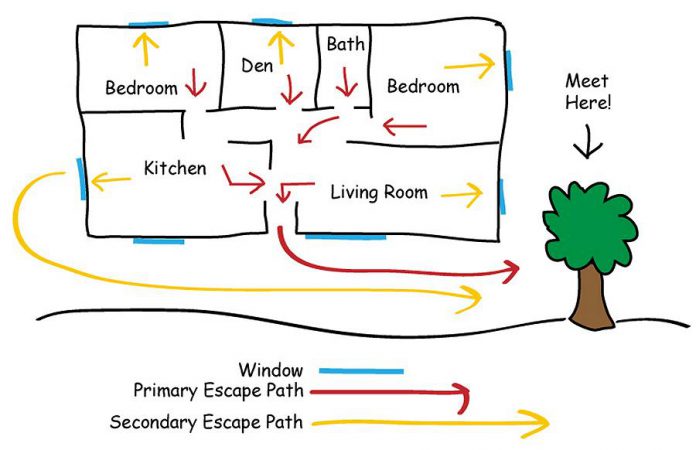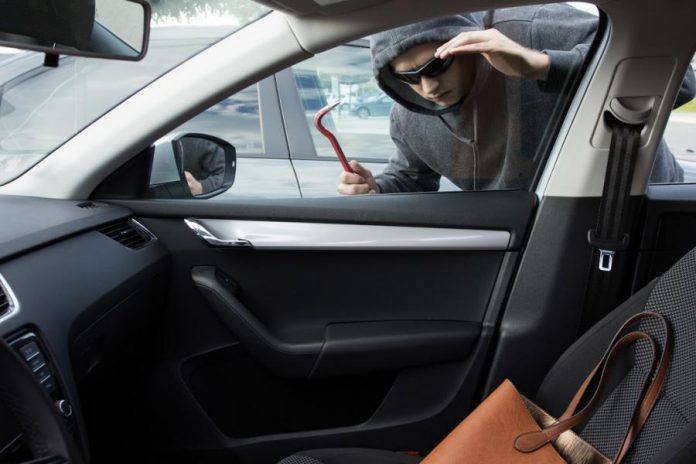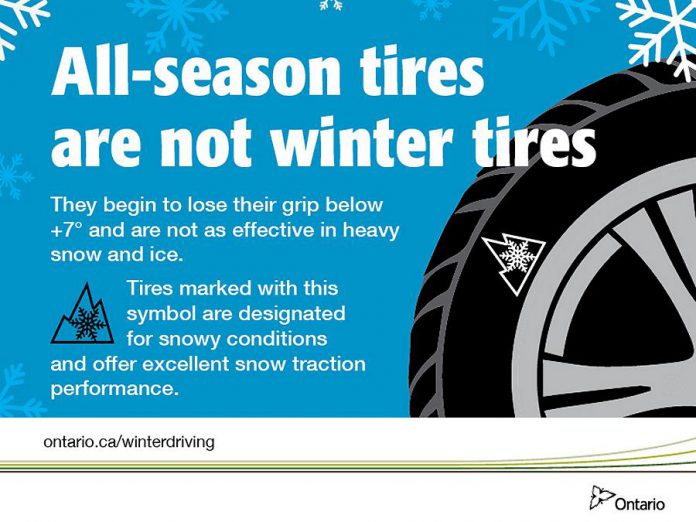
Every year around this time, police and fire services issue reminders to the public on how to ensure a safe and happy holiday season. For your convenience, we’ve collected various safety tips from Kawartha Lakes Fire Service, Peterborough Police Service, and the Ontario Provincial Police.
Be fire smart this holiday season
After three devastating house fires in Ontario last week killed nine people, it’s time to remember the importance of working smoke alarms, carbon monoxide detectors and home escape plans.
Smoke alarms are the law
It’s the law in Ontario for every home to have a working smoke alarm on each level of your home, including the basement, and outside all sleeping areas. If a smoke alarm is 10 years old or older, it needs to be replaced.
Test your smoke alarm regularly to help ensure your family is kept safe from smoke and fire. Replace your batteries at least once per year. Smoke alarms connected to an electrical power source may also have batteries as back-up power that need to be replaced and checked.

Carbon monoxide: the silent killer
Carbon monoxide (CO) is a colourless, odourless, and tasteless gas that is toxic. It’s a by-product of incomplete combustion of fuels such as natural gas, propane, heating oil, kerosene, coal, charcoal, gasoline, or wood. Automobiles left running in garages, gas barbecues operated inside the house, grills or kerosene heaters that are not properly vented, or chimneys or vents that are dirty or plugged may create unsafe levels of CO.
Proper placement of a CO alarm is important. In general, the human body is most vulnerable to the effects of CO during sleeping hours, so an alarm should be located in or as near as possible to the sleeping area of the home. If only one alarm is being installed, it should be located near the sleeping area, where it can wake you if you are asleep. Where sleeping areas are located in separate parts of the home, an alarm should be provided for each area.
Home escape planning
If a fire breaks out in your home, your family may have under 60 seconds to escape to safety. Creating a home escape plan in advance ensures you can get out quickly and safely in the event of a fire.
You have to hear a smoke alarm for it to be effective. Make sure that everyone in your house can clearly hear the smoke alarms from their bedrooms.
Identify two ways out of every area in your home. Make sure that these exits from your home are kept free of clutter, snow, and ice. For example, if one of your escape routes is a window or sliding door, make sure it isn’t frozen shut.
Have a designated meeting area outside of your house where all family can safely meet outside in the event of a fire.
Go over your procedure for calling 9-1-1 in the event of a fire once you leave the house. You might not have time to find your cell phone if there’s a fire, so consider making arrangements in avance with a neighbour. If you have to drive somewhere to call 9-1-1, make sure you have a spare set of vehicle keys outside of your home.
Lock it or lose it: don’t be a victim of theft over the holidays

With lots of people out shopping for gifts and often distracted, the holiday season is an ideal time for thieves to take advantage of carelessness.
Always park your vehicle in a well-lit or public area. Make sure you lock your vehicle whenever you leave it and place valuables out of plain sight, such as in the trunk (or remove them from the vehicle completely).
Never leave your vehicle unattended while it’s running (for example, if you’re warming it up).
Don’t leave your vehicle registration certificate and proof of insurance in your glove compartment; keep it on your person at all times.
The Ontario Provincial Police (OPP) is encouraging citizens to “Lock It or Lose It” by taking precautions to protect their vehicle contents from theft. Under the “Lock It OR Lose It” program, the OPP will examine parked vehicles to confirm they are locked and that no valuables have been left in plain view. A “Lock It OR Lose It” notice is placed on every vehicle checked which specifies what safety precautions were ignored and simple prevention tips are provided which drivers can use to protect their vehicles and valuables from theft.
By taking simple preventative measures, you can avoid being victimized and having your holiday ruined.
Arrive alive: prepare for winter driving and drive safely

Judging from the snow we’ve had so far this December, it’s look like we’re in for a typical Canadian winter when it comes to driving.
Here a few tips to ensure you are prepared for driving this winter and able to make it safely to your family or friends when travelling over the holidays.
- Get your vehicle winter-ready with a maintenance check-up.
- Carry an ice scraper and use washer fluid effective to -40°C (keep an extra container of washer fluid in your trunk).
- Keep your fuel tank at least half full at all times.
- Consider installing four winter tires. They’re a good investment: not only do they make winter driving safer, but they’ll make your all-season tires last longer.
- Make sure you have a charged cell phone with you and have an emergency supply kit in your vehicle (including non-perishable food, water, a flashlight, a blanket, warm clothers, jumper cables, a shovel, and traction mats or sand).
- When making a trip, check the weather forecast and road conditions; consider delaying or even cancelling your trip if conditions are bad.
- Always keep your vehicle clear of snow and ice. Make sure that headlights, tailights, side mirrors, windows, and the top of your vehicle are free of snow and ice before getting on the road.
- Slow down! Adjust your driving for the conditions. Many winter collisions occur because drivers go too fast and don’t leave sufficient space for stopping. In poor conditions, avoid hard braking, quick acceleration, and abrupt gear changes.
- Watch for snowplows. Be patient, give them room, and don’t try to pass them.
VIDEO: Top 10 Tips to Prep for Winter Driving
Practice safe snowmobiling
For snowmobilers, the holiday season is a perfect time to head out on the trails and enjoy the great outdoors. But every year, tragedy strikes when snowmobilers hit obstacles or go through the ice. Here are a few helpful tips so you can enjoy the winter snowmobile season safely.
- Ride with a buddy or a group. If heading out alone, leave a detailed plan including your destination and your anticipated return.
- Always expect the unexpected: you never know what’s around the corner or over the next hill.
- Know your abilities and those of your machine and don’t push beyond them.
- Stay on trails and in areas where snowmobiles are permitted. Drive on the right side of the trail.
- Use extra caution when riding in the dark.
- No ice is safe ice: conditions can change quickly. What was safe last week might not be safe this week.
- Only travel on ice that’s already well-tracked and stay on the marked Ontario Federation of Snowmobile Club (OFSC) trails.
- If you are riding on frozen waterways, check the ice thickness and quality with local ice hut operators and the Ministry of Natural Resources and Forestry.
- When travelling on ice, stay alert and watch for obstacles like rocks, stumps, docks, pressure cracks, fishing huts, and open water created by bubblers and river mouths.
- Wear a buoyant snowmobile suit and carry ice picks on you. Wear a proper snowmobile helmet and ensure it’s fastened. Carry emergency supplies and learn first aid and survival skills.
- Never ride while under the influence of alcohol or drugs.

This year, the Ontario Provincial Police (OPP) will be out in full force with radar units conducting speed enforcement on OFSC trails. Remember that the speed limit is 50 km/h on OFSC trails and 20 km/h on city streets.
Also be prepared to stop at Reduce Impaired Driving Everywhere (RIDE) programs and always have your documentation ready for inspection.


























